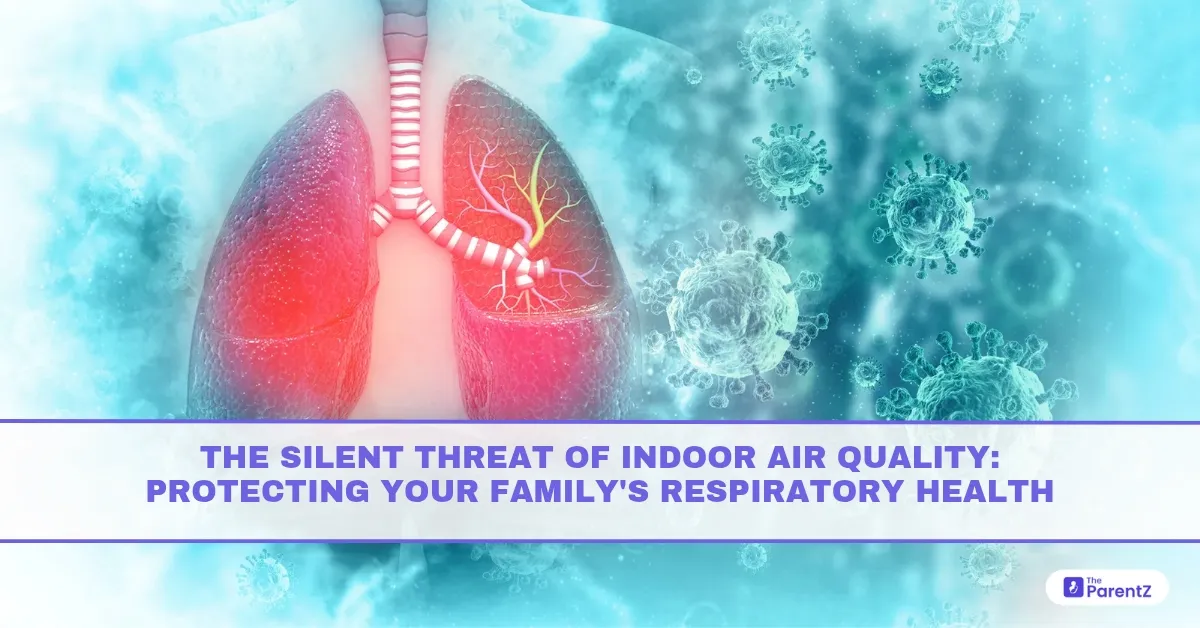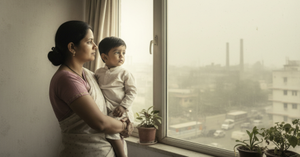A Place We Trust the Most
There’s something deeply comforting about watching your children play on the living room floor, laughter echoing through the home you so lovingly built. The walls are painted with care, furniture child-proofed, windows shut tight on cold days. You assume it’s the safest place in the world. But what if I told you that the very air they breathe inside this sanctuary might be quietly harming their health?
I remember the first time I heard about indoor air pollution. It struck me hard how could something invisible in a place so clean and cherished pose a danger? I had candles burning, air fresheners spraying lavender scents, and the windows sealed to keep the outside dust away. It felt like protection, but in reality, I was trapping harmful pollutants inside.
Understanding Indoor Air Pollution
Indoor air quality (IAQ) refers to the condition of the air within and around buildings and structures, especially as it relates to the health and comfort of occupants. According to the World Health Organisation (WHO), indoor air pollution causes approximately 3.2 million deaths annually, with children and older adults being the most vulnerable.
Common indoor pollutants include:
- Volatile Organic Compounds (VOCs): Found in paints, cleaning products, air fresheners, and synthetic fragrances.
- Particulate Matter (PM2.5): Tiny particles released from cooking, candles, fireplaces, and cigarette smoke.
- Carbon monoxide (CO): An odorless gas from fuel-burning appliances.
- Nitrogen dioxide (NO2): Emitted from gas stoves and heaters.
- Mold spores and allergens: From damp areas, carpets, or ventilation systems.
- Formaldehyde: Released from furniture, pressed wood products, and household textiles.
How Indoor Air Affects Your Family’s Health
Poor indoor air quality doesn’t cause just momentary discomfort; it can have long-term health impacts, especially on respiratory health. Children, due to their developing lungs and faster breathing rates, are especially susceptible.
Medical consequences include:
- Respiratory infections (e.g., bronchitis, pneumonia)
- Allergic rhinitis and asthma exacerbations
- Chronic Obstructive Pulmonary Disease (COPD)
- Headaches, fatigue, and dizziness
Developmental delays and decreased lung function in children
A study published in the American Journal of Respiratory and Critical Care Medicine linked prolonged exposure to indoor pollutants with a 30–50% increase in respiratory symptoms among children, including wheezing and chronic cough.
How to Know If Your Indoor Air Is Unsafe
It’s not always easy to detect poor indoor air quality because many pollutants are **odorless and invisible**. But here are some telltale signs:
Persistent coughs or allergic symptoms at home
- Mold growth or musty smells
- Frequent headaches or dizziness
- Stale air with no circulation
- Condensation on windows or damp patches on walls
You can also test your air quality using:
Indoor air quality monitors – These devices detect PM2.5, CO2, humidity, VOCs, and more.
Professional home inspections – For mould, radon, and HVAC issues.
DIY kits – For detecting specific pollutants like radon or formaldehyde.
How to Improve Indoor Air Quality at Home
Creating a healthier indoor environment is not only possible, it’s essential. Here’s how you can get started:
1. Ventilate Your Home
- Open windows and doors for cross-ventilation.
- Use exhaust fans in bathrooms and kitchens.
- Avoid sealing your house too tightly but fresh air circulation is vital.
2. Purify Your Air
- Invest in a HEPA air purifier to filter out dust, allergens, and particles.
- Use activated carbon filters to absorb VOCs and odors.
- Grow indoor plants like Areca palm, Spider plant, and Snake plant that naturally purify the air (but don’t rely on them as your only solution).
3. Maintain Humidity Levels
- Ideal indoor humidity is between 30–50%.
- Use a dehumidifier in damp areas.
- Fix leaks and prevent standing water to avoid mold growth.
4. Use Non-Toxic Products
- Choose low-VOC or VOC-free paints and cleaning products.
- Avoid synthetic air fresheners; opt for essential oil diffusers (in moderation).
- Use natural cleaning alternatives like vinegar, baking soda, and lemon.
5. Clean Regularly and Properly
- Vacuum with a HEPA filter.
- Wash curtains, bedding, and soft furnishings often.
- Keep pets clean to reduce dander.
6. Avoid Indoor Smoking and Burning
- Never smoke indoors.
- Limit the use of candles, incense, and fireplaces.
- Ensure chimneys and vents are regularly cleaned.
7. Check and Maintain Appliances
- Service HVAC systems, gas stoves, and heaters regularly.
- Install carbon monoxide detectors near sleeping areas.
Protecting the Most Vulnerable: Children and the Elderly
Children’s immune and respiratory systems are still developing, which makes them more prone to the ill effects of indoor air pollution. Similarly, the elderly often have weaker immune systems or pre-existing health conditions. Creating a clean air environment at home is one of the most proactive steps you can take to protect them.
Final Thoughts: Your Home Can Be a True Sanctuary
We often worry about pollution outside the traffic fumes, industrial emissions, and dust, but forget that indoor air can be up to five times more polluted than outdoor air, according to the EPA. That’s a sobering thought, especially when we spend over 90% of our time indoors.
But there’s good news: you have control over your indoor environment. By making small, consistent changes, you can significantly reduce exposure to harmful pollutants and improve your family’s respiratory health.So next time you see your kids sprawled across the sofa or tucked safely into bed, take comfort in knowing that the air they breathe is clean, safe, and healing because you made it so.








Be the first one to comment on this story.